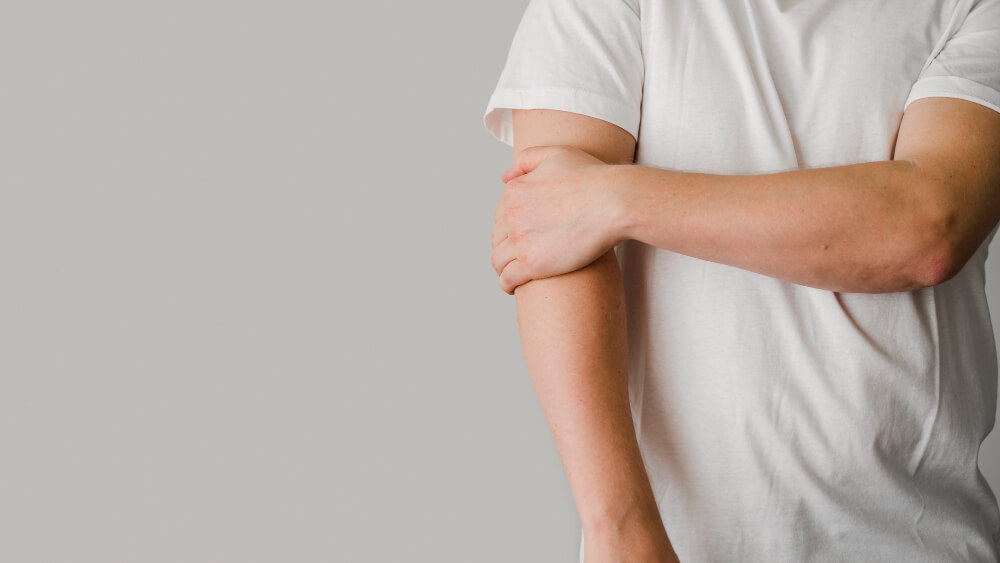Elbow Pain Relief: When to See Your Primary Care Doctor
Elbow pain can be a real pain – literally! It can make everyday activities like reaching for a cup of coffee or shaking hands a chore. While occasional aches can be temporary and resolve on their own, persistent or severe elbow pain warrants a visit to your primary care doctor. This article explores the importance of seeking medical attention for elbow pain and the role your primary care doctor plays in diagnosis, treatment, and helping you get back to your normal activities.

Don’t Wing It! Recognizing When Elbow Pain Needs Medical Attention
The elbow joint is a complex structure involving bones, ligaments, tendons, and muscles. Elbow pain can arise from various conditions, some minor and others requiring medical intervention. Here are some signs that indicate it’s time to see your primary care doctor for elbow pain relief:
- Persistent Pain: If your elbow pain lasts for more than a few days or weeks, especially if it interferes with daily activities, don’t hesitate to seek medical advice.
- Sharp or Throbbing Pain: Sharp or throbbing pain in your elbow can indicate a more serious underlying issue.
Swelling, Redness, or Warmth: These signs can point to inflammation or infection, requiring prompt medical attention. - Limited Range of Motion: Difficulty bending or straightening your elbow can be a sign of an injury or underlying condition.
- Numbness or Tingling: These sensations in your elbow or hand might indicate nerve damage.
- Locking or Catching: If your elbow feels like it’s locking up or catching, it could be a sign of a loose fragment of bone or cartilage within the joint.
- Pain Worsening with Activity: If your elbow pain becomes more severe with specific activities, such as lifting objects or playing sports, seeing your doctor is crucial.
Understanding Common Causes of Elbow Pain
Several conditions can contribute to elbow pain. Here are some of the most common:
- Tendonitis: Inflammation of a tendon caused by overuse or repetitive activities. Common examples include tennis elbow (lateral epicondylitis) and golfer’s elbow (medial epicondylitis).
- Bursitis: Inflammation of a bursa, a fluid-filled sac cushioning the bones near the joint. Olecranon bursitis, affecting the bursa at the tip of the elbow, is a common type.
- Arthritis: Degenerative joint disease like osteoarthritis can cause pain, stiffness, and swelling in the elbow joint.
- Fractures: A fall or direct blow to the elbow can cause a fracture of the bones in the joint.
- Strains and Sprains: Overstretching or tearing of ligaments or muscles surrounding the elbow can lead to pain and tenderness.
- Cubital Tunnel Syndrome: Compression of the ulnar nerve, causing numbness and tingling in the ring and pinky fingers.
Diagnosis of Elbow Pain in Primary Care

Your primary care doctor will conduct a thorough evaluation of your elbow pain. This typically involves:
- Detailed Medical History: Discussing the nature of your pain, its duration, location, and any aggravating or alleviating factors.
- Physical Examination: Your doctor will assess your elbow joint for tenderness, swelling, range of motion, and any visible signs of injury.
- Diagnostic Tests: Based on your symptoms and physical examination, your doctor may order additional tests, such as X-rays, ultrasounds, or MRIs, to visualize the bones, soft tissues, and nerves within the elbow joint.
In most cases, your primary care doctor can diagnose the cause of your elbow pain through a comprehensive evaluation. However, if your doctor suspects a more complex condition or needs specialized treatment options, they may refer you to an orthopedic surgeon or rheumatologist.
Treatment Options for Elbow Pain Offered by Primary Care Doctors
The good news is that many cases of elbow pain respond well to non-surgical treatments offered by your primary care doctor. These may include:
- Rest and Activity Modification: Reducing activities that aggravate your pain allows for healing and inflammation to subside.
- Ice Therapy: Applying ice packs to the affected area can help reduce pain and swelling.
- Heat Therapy: Applying heat therapy (after the initial inflammation subsides) can improve circulation and promote healing.
- Over-the-Counter Pain Medications: Medications like acetaminophen or ibuprofen can help manage pain and inflammation.
- Physical Therapy: A physical therapist can design exercises to strengthen the muscles supporting your elbow joint and improve flexibility.
- Bracing or Splinting: Wearing a brace or splint can help immobilize your elbow and promote healing.
